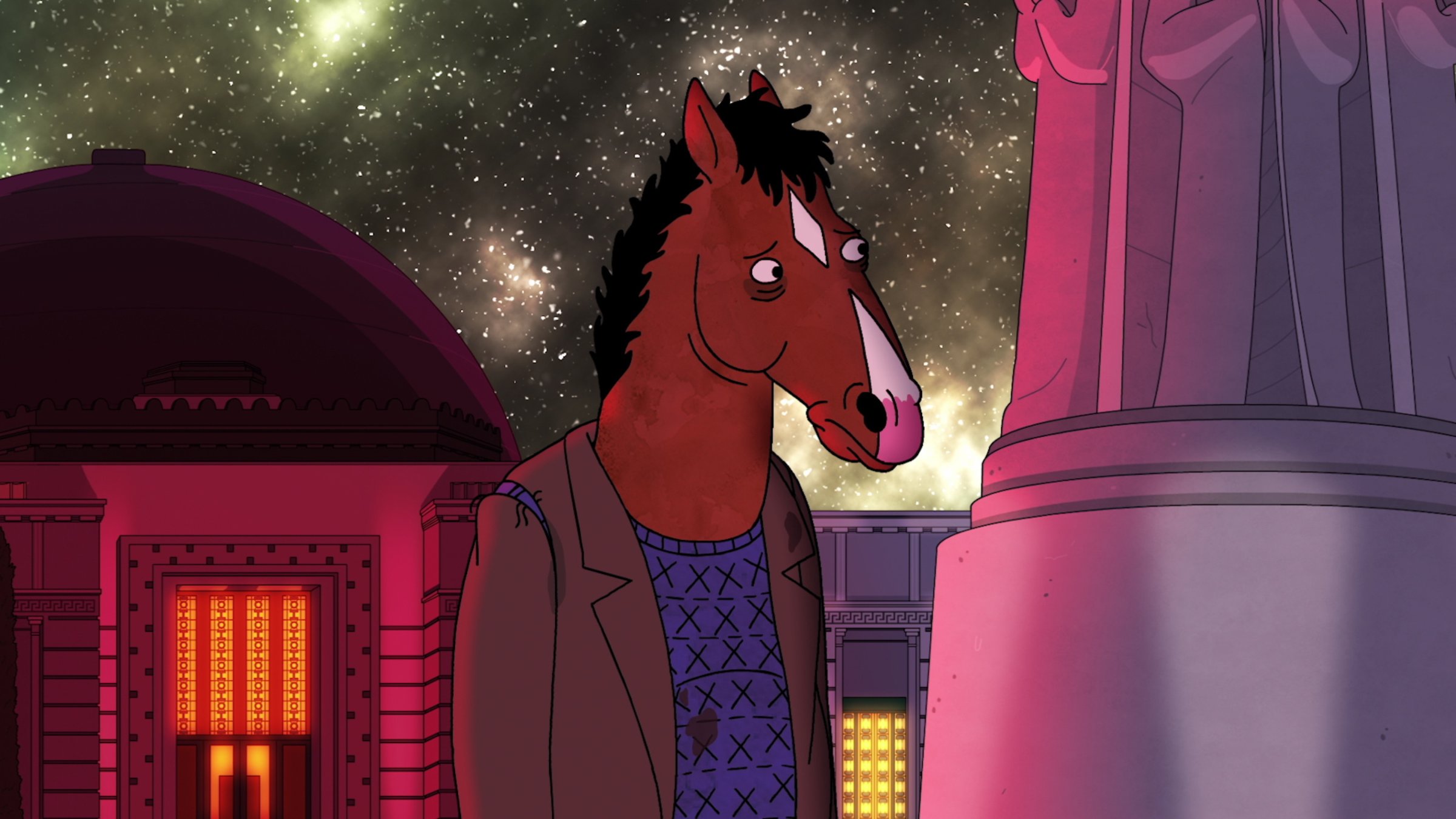
BoJack Horseman sounded kind of silly at first: A cartoon about a washed-up ’90s sitcom star who also happens to be a horse? Who asked for that? And sure enough, during its first season, mixed reviews reflected both a slow start and a widespread frustration with creator Raphael Bob-Waksberg’s seemingly slight premise.
But five years later, with the first half of its two-part final season coming to Netflix on Oct. 25, BoJack may be the most important—and beloved—animated series since The Simpsons. A believably depressed substance abuser with a habit of hurting the people who care the most about him, BoJack (voiced by Will Arnett) became a poster boy for a mid-2010s movement for raw yet realistic and empathetic portraits of mental illness on television. Though he’s certainly a descendent of Don Draper and Tony Soprano, he also embodies a critique of the way prestige dramas romanticize their rich, moody antiheroes.
By now, the show’s commentary on the 21st century entertainment industry has extended far beyond BoJack. Drawn in witty detail by production designer Lisa Hanawalt, its setting is a surreal, satirical Los Angeles where humans and anthropomorphic animals walk shoulder to shoulder. And it thrives on an ensemble of BoJack’s friends and colleagues, each a multidimensional person trying to survive in a brutal city: his agent, a cat named Princess Carolyn (Amy Sedaris), leans in far enough to fall over. Intelligent, self-righteous Diane Nguyen (Alison Brie) chases success as a journalist to hide from her emotions. Benign slacker Todd Chavez (Aaron Paul) seems incapable of establishing a grownup life. Even BoJack’s peppy canine rival Mr. Peanutbutter (Paul F. Tompkins) struggles to maintain romantic relationships.
These characters come to the fore, one by one, in the masterful eight-episode first half of Season 6. (A second batch of eight arrives Jan. 20.) As BoJack hides at rehab, afraid to leave and risk hurting people, Diane and Carolyn’s efforts to temper their ambition with love (both romantic and familial) are especially poignant. Motivated or lazy, manic or depressive, what everyone in this world shares is restlessness. It’s no wonder that a jarringly photorealistic night-sky background becomes the season’s defining visual motif, not only appearing in outdoor scenes, but also often surrounding BoJack’s face when he stares at himself in the mirror. In BoJack Horseman’s Hollywood, every star is floating in a private abyss.
More Must-Reads from TIME
- Cybersecurity Experts Are Sounding the Alarm on DOGE
- Meet the 2025 Women of the Year
- The Harsh Truth About Disability Inclusion
- Why Do More Young Adults Have Cancer?
- Colman Domingo Leads With Radical Love
- How to Get Better at Doing Things Alone
- Michelle Zauner Stares Down the Darkness
Contact us at letters@time.com